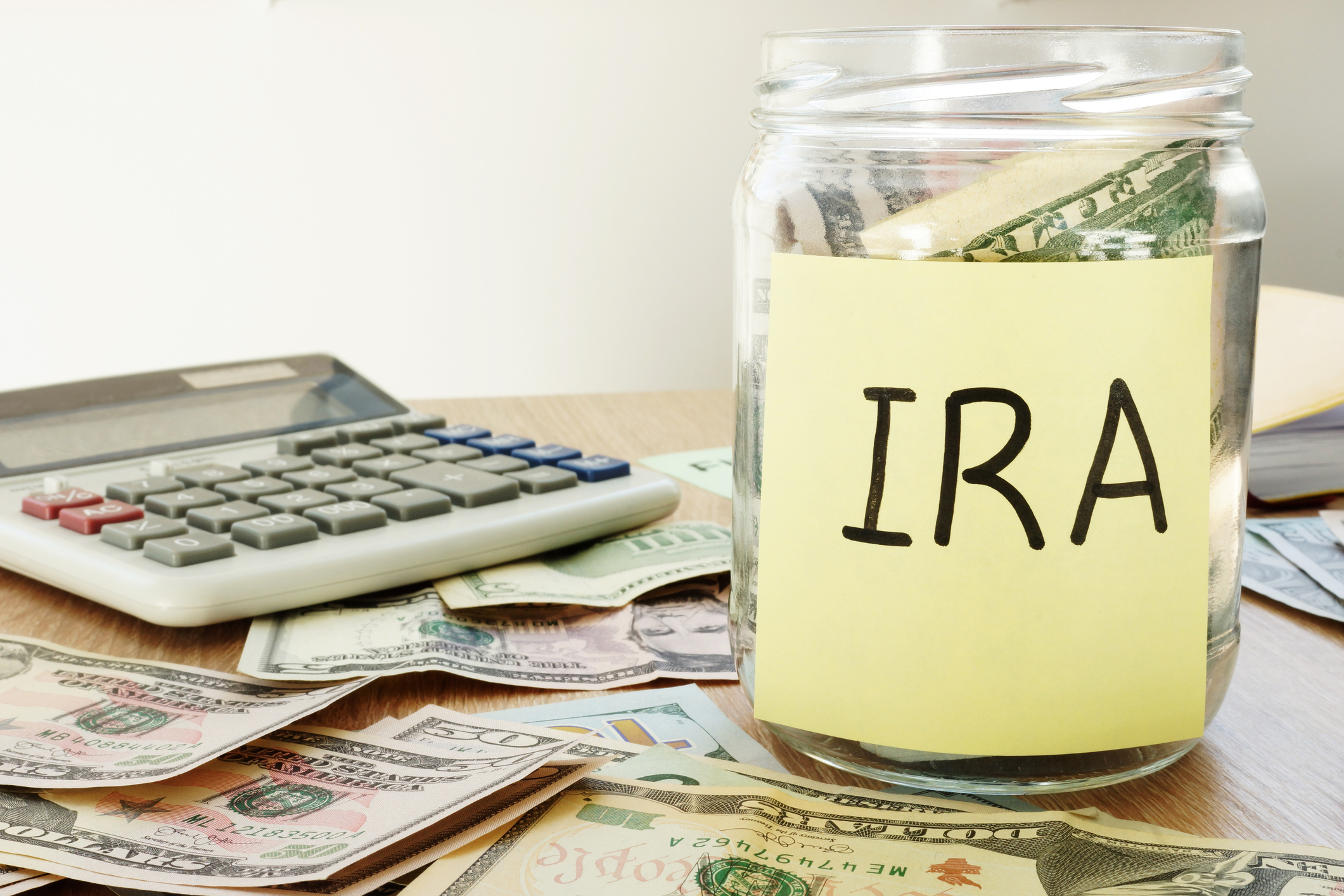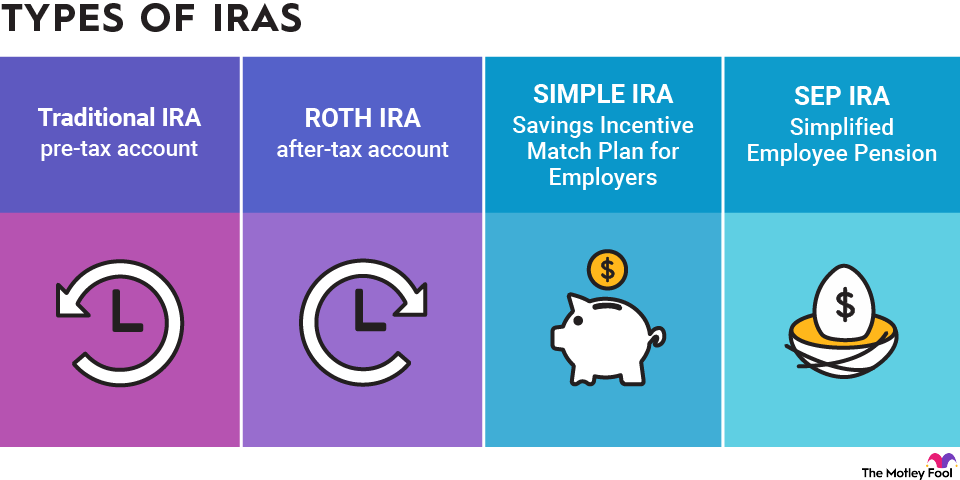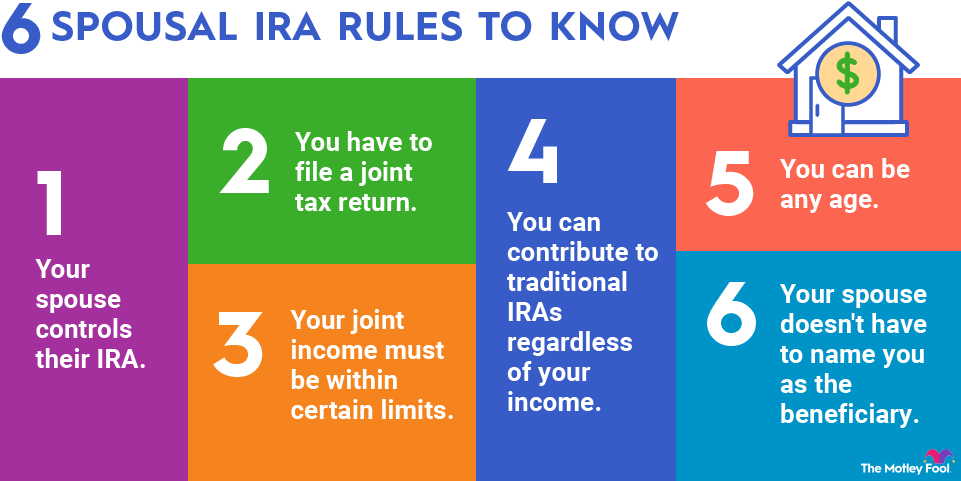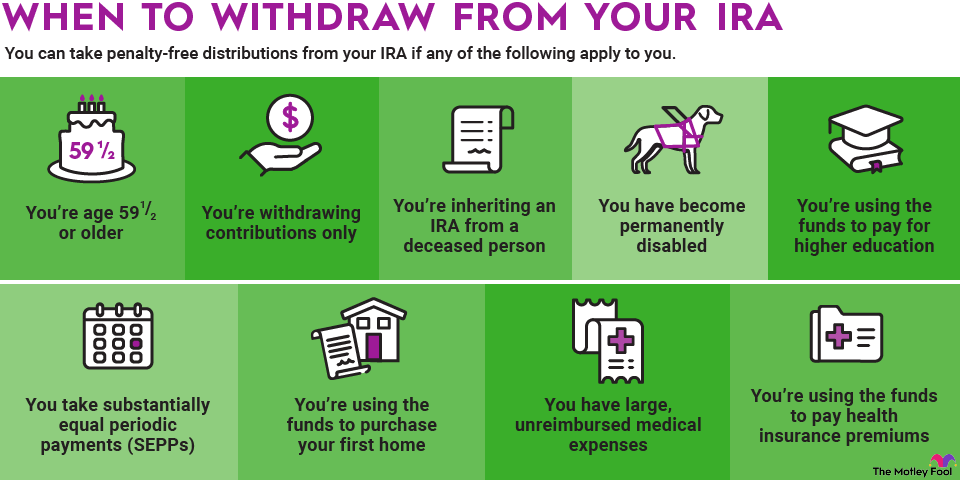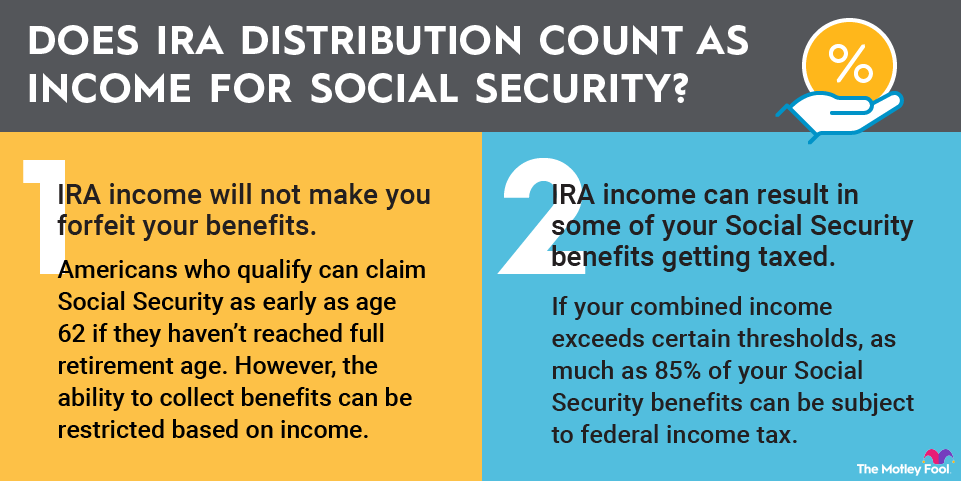Borrowing money from a retirement plan may be tempting: It's already your money, you don't have to get approval, and you won't owe a creditor.
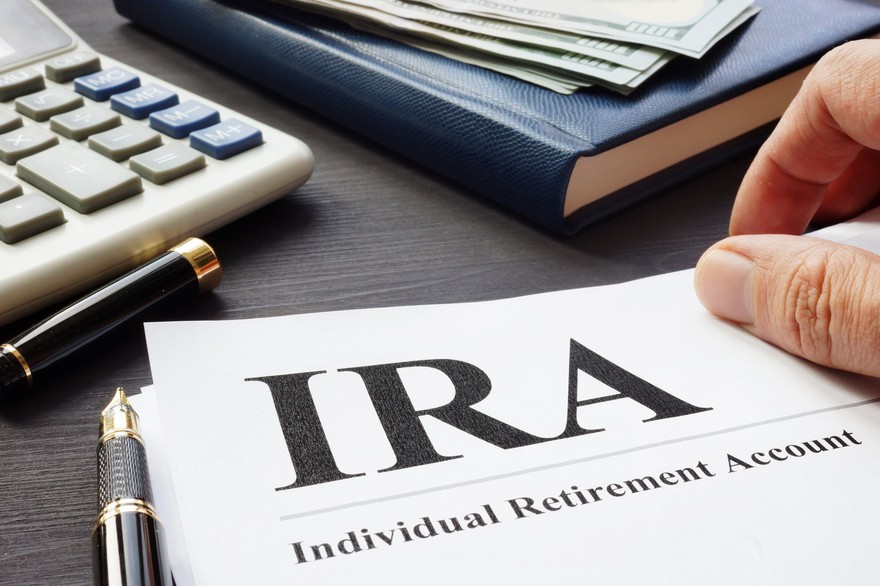
While some retirement plans, such as a 401(k), offer loan options, an IRA does not.
The good news is that you can sometimes find a workaround to temporarily access your IRA money by conducting an "indirect rollover." However, there are risks to this method, and it isn't always an option.
Advantages of borrowing over withdrawing retirement funds
When you need money, it's often better to borrow from a retirement plan instead of making a straight withdrawal. There are two reasons for this:
- You won't get hit with an early withdrawal penalty. This normally applies to withdrawals from traditional tax-advantaged retirement accounts before age 59 1/2.
- You won't permanently lose the invested funds and their potential gains. When you withdraw money, you lose out on future compound interest, and your retirement account balance will ultimately be smaller. If you borrow instead, you'll put the money back in your account where it can work for you.
While borrowing can be better than withdrawing funds, it's not always an option -- especially with an IRA.
Using an indirect rollover for a short-term IRA loan
You can't get an IRA loan, but you can make an indirect rollover. This is different from a direct rollover, where a distribution from a retirement plan is sent directly to another retirement account.
By contrast, an indirect rollover occurs when you receive a distribution from a retirement plan (in this case, an IRA). You're then responsible for depositing it into an IRA within 60 days. If you stick to that window, you won't incur an early withdrawal penalty, so this opens up the opportunity to borrow from an IRA on a short-term basis.
If you need money and know you'll be able to pay it back within 60 days, you can initiate an indirect rollover, use that money temporarily, and then pay it back to avoid a penalty. You don't even have to deposit the funds into a new IRA; you can stick them right back into your existing IRA.
You're limited to one IRA rollover per 12-month period, and the strategy does have risks. If you don't deposit the money back into an IRA within the 60-day time frame, the amount removed will be treated as a distribution, which means it will be subject to a 10% early withdrawal penalty. But if you just need a short, temporary influx of cash, using an indirect IRA rollover as a loan could work.
Penalty-free IRA withdrawals
Since you can't get an IRA loan, you may consider withdrawing money instead. Be aware that if you take money out of your IRA, you'll be taxed at your ordinary income tax rate unless it's a qualified Roth IRA withdrawal. You may also be subject to a 10% early withdrawal penalty unless you qualify for an exception, including any of the following:
- You're at least 59 1/2
- You meet the IRS definition of disabled
- You're taking substantially equal periodic payments
- You're withdrawing up to $10,000 toward the purchase of a first home
- You're paying medical expenses that exceed a certain percentage of gross income
- You're unemployed and using the money to pay medical insurance premiums
- You're paying past-due taxes because you're subject to an IRS levy
- You're covering eligible higher-education expenses
If you have a Roth IRA, you are always permitted to withdraw the money you've invested (your "contributions") without incurring penalties. Penalties only apply to the early distribution of gains.
Consider a 401(k) loan
Although you cannot borrow from your IRA, it's generally possible to borrow from your 401(k) -- depending on your 401(k) plan's rules. Normally, you may borrow up to $50,000, or 50% of your vested account balance.
Before borrowing or withdrawing from a 401(k) or IRA, however, carefully consider the risk to your retirement security and explore other available options.

